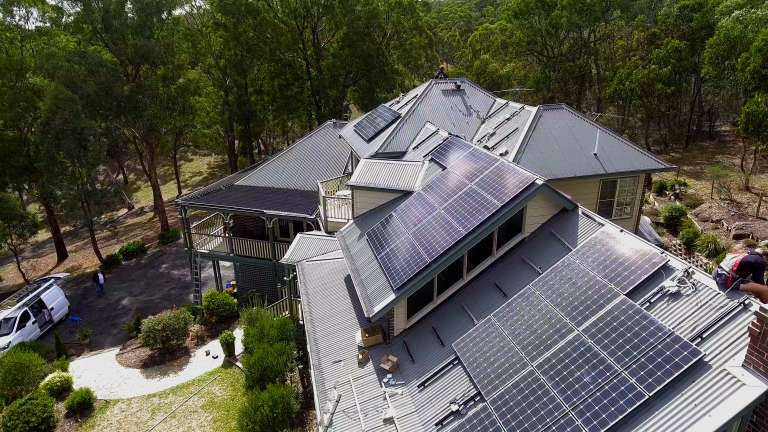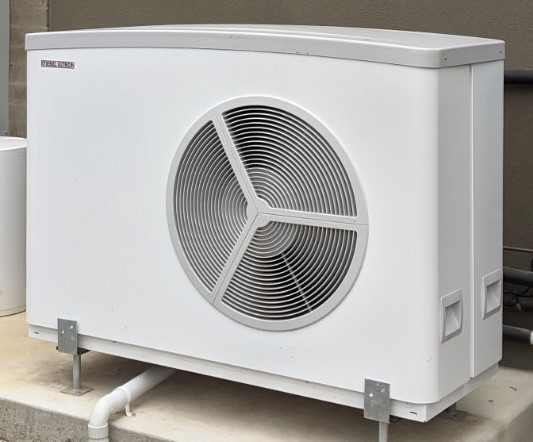
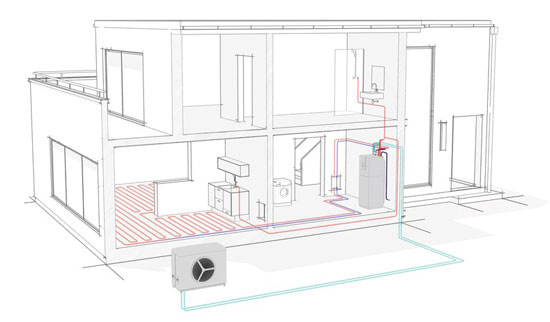
Hydronic Heating
Hydronic heat pumps that use the outside air as the heat source produce air-to-water heating and cooling. Reverse cycle air conditioners produce air-to-air heating and cooling. Hydronic heat pumps can also extract heat from the ground, water or effluent. However, these options are more expensive but can make sense in alpine areas or commercial facilities.
Radiator Panels & Convectors
The main advantage of air-to-water heat pumps is the ability to transfer heat from circulating water via radiation and convection. They can also remove heat in reverse-cycle, cooling your home.
Heat from circulating hot water can be radiated from your floor, radiator panels or towel rails. Radiant heat is best for people with allergies or asthma because it doesn’t move air about.
Radiator panels heat via radiation from the panel surface and also convection, heating rising air through the middle of the panels. Hydronic fan-coil convectors heat via convection only using small fans to drive air flow through their fin coils. Air flow can be turned down to minimal and convectors can still generate effective and pleasant heating. They are also designed for cooling in summer. Refer Toorak case study.
Underfloor Systems
Underfloor hydronic systems radiate heat from the floor that rises naturally. Underfloor systems provide gentle and even heat throughout your house. For a two storey house, the rising heat will find its way upstairs making the job of heating there easier. Explore the whether in-slab and in-screed systems are better for your home. There also underfloor systems available for suspended floors. Refer Castlemaine case study.
Make your architectural design easier by using thin water pipes to transfer heat throughout your home. This is particularly beneficial with flat or cathedral roofs. Also, water pipes are more environmentally friendly than refrigeration pipes.
Combined Systems
Air-to-air conditioners, or reverse-cycle air conditioners, are less expensive to install but can only transfer heat using convection.
Convection is perfect for cooling, where feeling the airflow is beneficial because it also reduces the temperature you feel. However for heating, radiating heat is the gold standard.
For two storey houses in particular, a combination of hydronic heat pumps on the ground floor and reverse cycle air conditioners on the first floor can make good sense for both comfort and economy. Refer Port Melbourne case study.
Hydronic Cooling
Hydronic heat pumps can heat and cool, whereas gas boilers can only heat. Consider changing over your gas boiler to an electric heat pump. Explore the advantages, contact us.
Hydronic heat pumps provide cooling through either fan-coil convectors or underfloor circuits cooling your floor surface temperature. The former is more effective because convectors are designed to take chilled water below the dew point. Underfloor area cooling, on the other hand, is designed for cool water above the dew point.
Chilled Water Cooling
Chilled water employs sensible cooling (temperature) and latent cooling (dehumidification) which makes it more effective. It is helped by the greater temperature difference (Delta T) between the chilled circulating water and the room temperature.
Underfloor Area Cooling
However, if you have invested in an underfloor heating system, you have the option of using cool water from the heat pump working in reverse-cycle to circulate cool water underneath your floor. The objective is to keep your floor surface temperature at around 18 degrees and above the dew point. This also feels nice on your bare feet in summer.
If you plan to use underfloor area cooling, it is important to have a thermally efficient house.
Consider ceiling fans if you choose underfloor area cooling. This lowers the perceived temperature across your body and helps your cool floor absorb more heat.
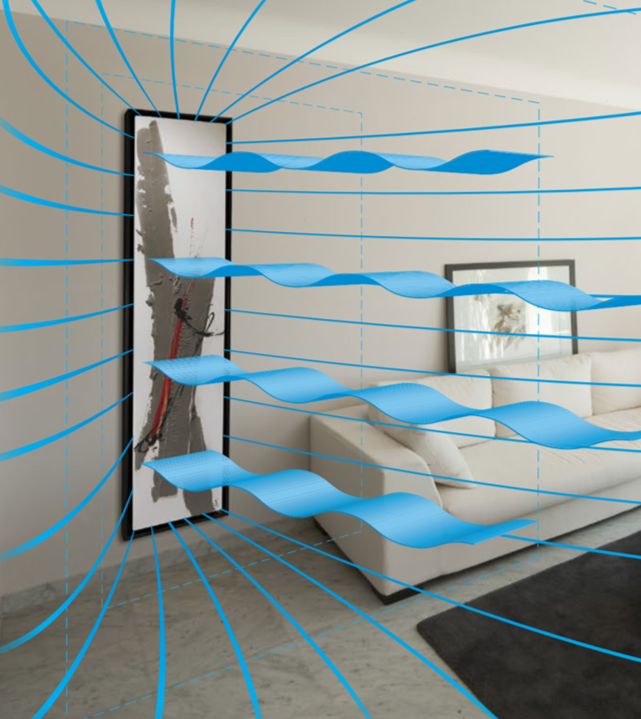
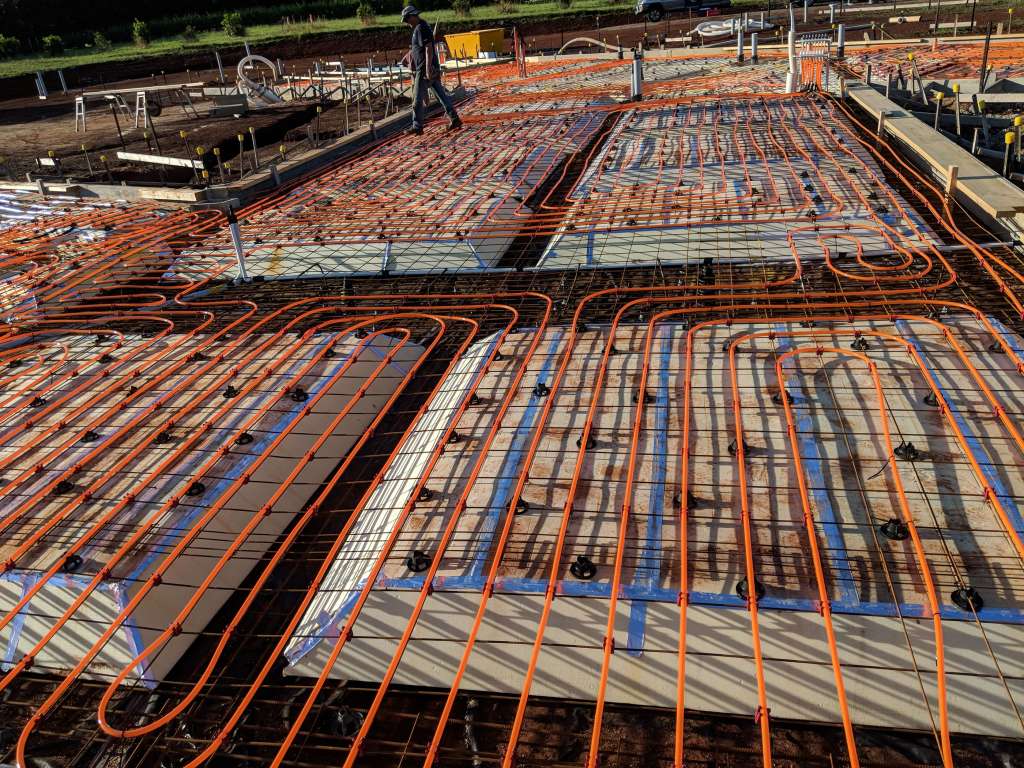
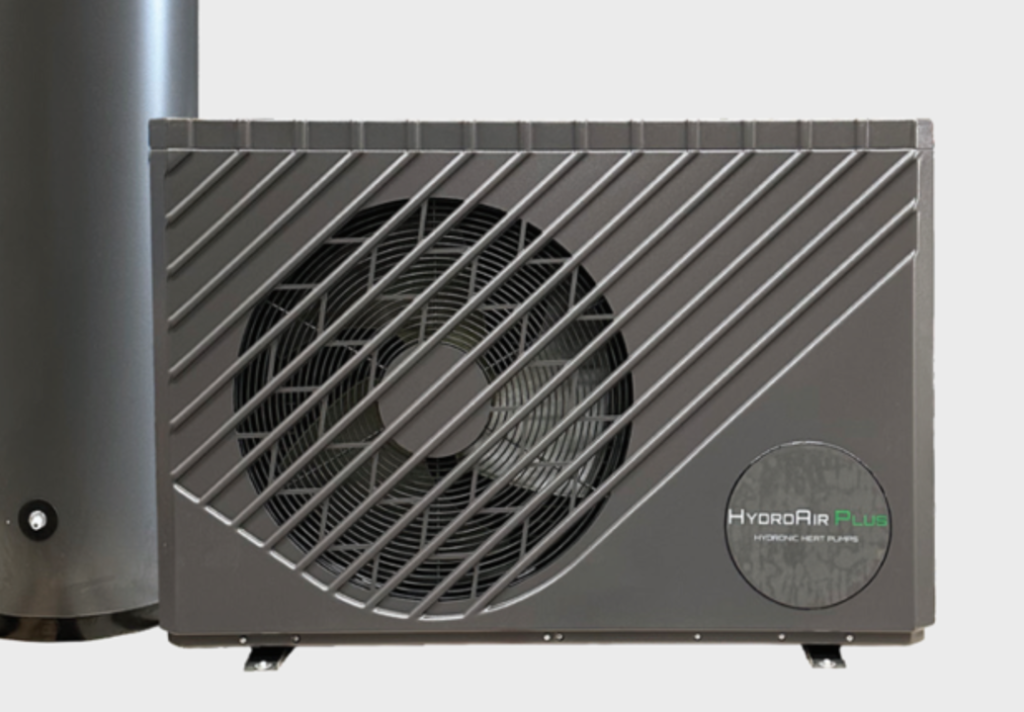
Which Hydronic Heat Pump?
Explore which heat pump is best suited to your project. They have different characteristics for different applications. We only recommend quality heat pumps with good warranties and support in Australia.
Hydrosol will also consider the thermal performance of your house, your preferences, installation options, project type and budget in order to find the best match for you.
Hydrosol recommends these hydronic heat pumps:
Solar Power
Use your solar power to operate your hydronic heat pumps during the day. Energize the thermal mass inside your house during the day then release it at night.
Install batteries for solar power storage if you can’t use most of your power during the day. Alternately, consider batteries later when they become more cost effective.
Oversize your buffer tank if you have a light weight home with little internal thermal mass, such as a home on stumps. The storage water will act as a thermal battery.
